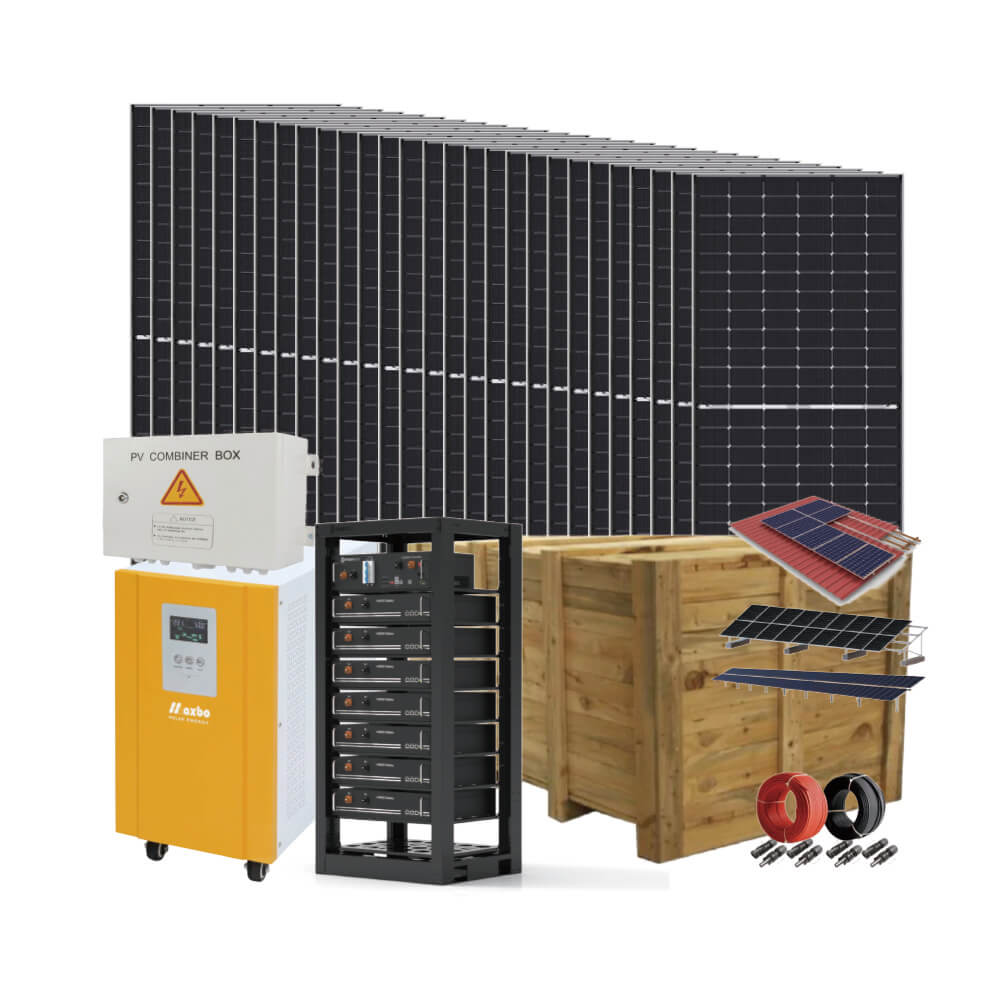The shift towards renewable energy has led many homeowners to consider solar power as a viable option for their energy needs. One of the most common questions is, “How many solar panels are needed to power a house?” This article will explore the factors that determine the number of solar panels required and provide a detailed example using the Maxbosolar 5kW Off-Grid Solar System kit.

Factors Influencing the Number of Solar Panels Needed
Several factors influence the number of solar panels required to power a house. These include the energy consumption of the household, the efficiency of the solar panels, the geographic location, and the available roof space.
1. Energy Consumption
The first step in determining the number of solar panels needed is to calculate the household’s energy consumption. This is typically measured in kilowatt-hours (kWh). The average U.S. household consumes about 877 kWh per month, but this can vary significantly based on the size of the house, the number of occupants, and their energy usage habits.
2. Solar Panel Efficiency
Solar panel efficiency refers to the amount of sunlight that a solar panel can convert into usable electricity. Most residential solar panels have an efficiency rating between 15% and 20%. Higher efficiency panels generate more electricity in a smaller area, which can be beneficial if roof space is limited.
3. Geographic Location
The amount of sunlight a location receives, known as solar insolation, plays a crucial role in determining the number of solar panels needed. Areas with higher solar insolation will require fewer panels to generate the same amount of electricity compared to areas with less sunlight.
4. Roof Space
The available roof space will also influence the number of solar panels that can be installed. Larger roofs can accommodate more panels, which can generate more electricity.
Calculating the Number of Solar Panels Needed
To calculate the number of solar panels needed to power a house, follow these steps:
- Determine the household’s energy consumption: Calculate the total energy usage in kWh per month.
- Assess the solar panel output: Find out the average energy output of a single solar panel in your area.
- Calculate the total number of panels needed: Divide the household’s monthly energy consumption by the average monthly output of a single panel.
Example Calculation Using Maxbosolar 5kW Off-Grid Solar System Kit
Let’s use the Maxbosolar 5kW Off-Grid Solar System kit as an example to demonstrate the calculation.
Maxbosolar 5kW Off-Grid Solar System kit specifications:
- Daily energy production: 19.68 kWh
- Monthly energy production: 590 kWh
- System capacity: 5kW (resistive load), 1.6kW (inductive load)
- Battery options: 4.8kWh Lithium Battery / 4.8kWh Gel Battery
- Required area: 24 square meters
Step 1: Determine the Household’s Energy Consumption
Assume an average household energy consumption of 900 kWh per month.
Step 2: Assess the Solar Panel Output
The Maxbosolar system produces 590 kWh per month.
Step 3: Calculate the Total Number of Panels Needed
To determine the number of Maxbosolar systems needed:

Since you can’t install a fraction of a system, you would need 2 Maxbosolar 5kW systems to cover the energy consumption of 900 kWh per month.
Benefits of the Maxbosolar 5kW Off-Grid Solar System Kit

The Maxbosolar 5kW Off-Grid Solar System kit offers several advantages that make it an excellent choice for homeowners:
1. High Energy Production
The system produces 19.68 kWh per day, which is sufficient for households with moderate energy needs. Its monthly production of 590 kWh can significantly offset energy costs.
2. Versatile Battery Options
The Maxbosolar kit includes options for a 4.8kWh Lithium Battery or a 4.8kWh Gel Battery. These batteries provide reliable energy storage, ensuring that the household has access to power even when the sun isn’t shining.
3. Compact Design
With a required installation area of 24 square meters, the Maxbosolar system is relatively compact, making it suitable for homes with limited roof space.
4. Off-Grid Capability
As an off-grid system, the Maxbosolar kit allows homeowners to become completely independent of the grid. This can be particularly advantageous in remote areas or for those looking to achieve greater energy self-sufficiency.
Additional Considerations
When planning a solar power system for your home, consider the following additional factors:
1. Orientation and Tilt
The orientation and tilt of the solar panels can significantly affect their performance. In the northern hemisphere, panels should generally face south to maximize sunlight exposure. The optimal tilt angle varies by location but is typically equal to the latitude of the installation site.
2. Shading
Shading from trees, buildings, or other obstructions can reduce the efficiency of solar panels. It’s essential to ensure that the installation site receives ample sunlight throughout the day.
3. Local Regulations and Incentives
Local building codes, zoning regulations, and homeowner association rules can impact the installation of solar panels. Additionally, various incentives, such as tax credits and rebates, are available to help offset the cost of installing solar systems.
4. Maintenance
Solar panels require minimal maintenance, but it’s essential to keep them clean and free of debris to ensure optimal performance. Regular inspections can help identify and address any potential issues early on.
Final Toughts
Determining the number of solar panels needed to power a house involves understanding the household’s energy consumption, the efficiency of the solar panels, the geographic location, and the available roof space. The Maxbosolar 5kW Off-Grid Solar System kit provides a robust solution for those looking to harness solar energy, offering high energy production, versatile battery options, and compact design. By carefully considering these factors and performing the necessary calculations, homeowners can make informed decisions and take a significant step towards energy independence and sustainability.


